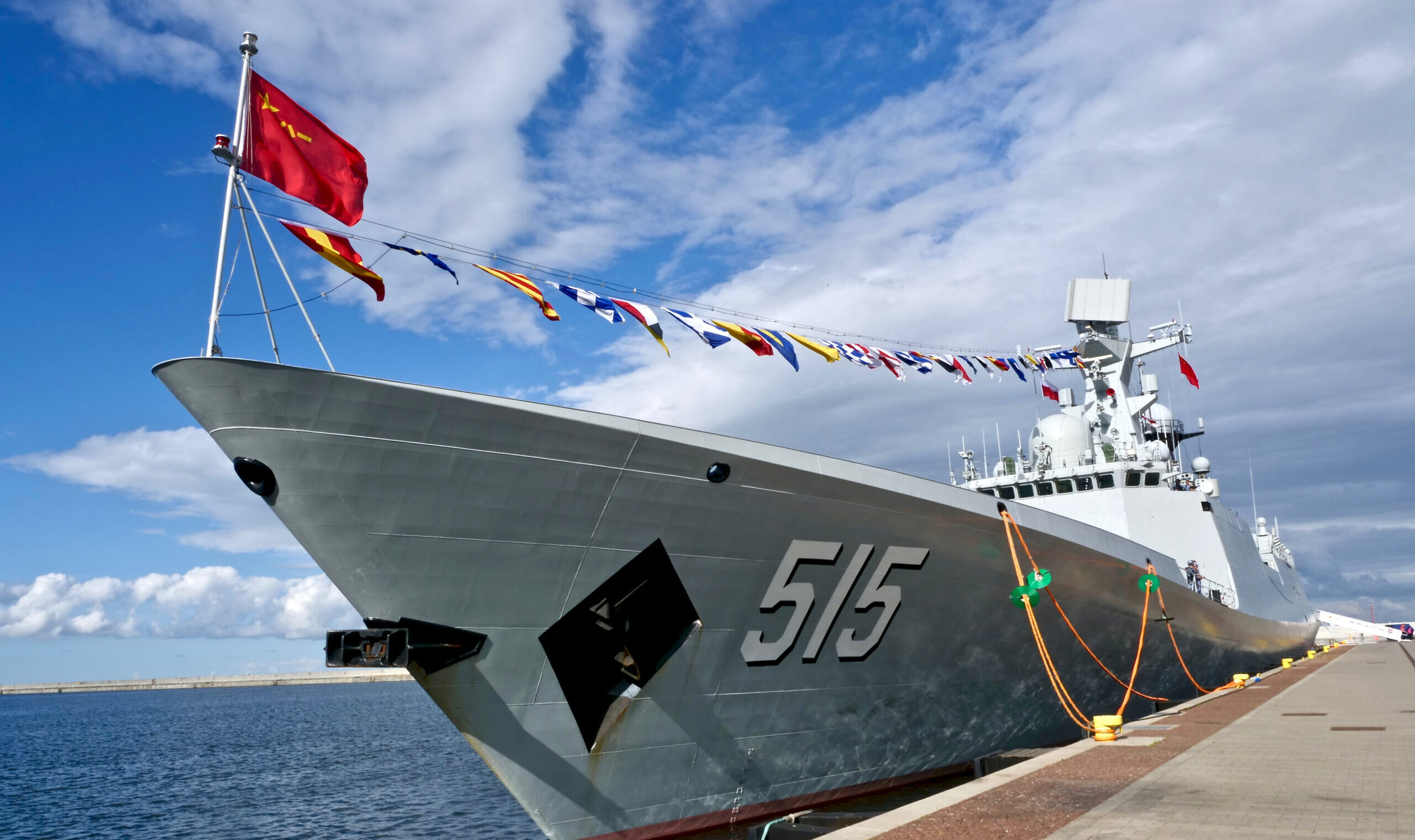A Naval Mirage
Who’s afraid of China’s navy?

War drums are beating along both the Potomac and the Yangtze. The U.S. Navy is puffing the dragon every way it can, warning that the Chinese navy is now larger than our own. It now has three aircraft carriers with at least one more building. China’s shipbuilding capacity dwarfs America’s. Chinese naval squadrons appear regularly on all the world’s seas, including the Mediterranean and the Baltic. The U.S. Navy’s claims of a vast naval threat from China almost take us back to early 1942, when Americans waited anxiously for reports of whether Japanese armies were landing on Hawaii and the West Coast.
Beijing for its part is stoking the fire. It claims it faces deadly threats from the first island chain, the islands closest to the Chinese mainland including Japan, Taiwan, and the Philippines. It claims a “Nine-dash Line” through the South China Sea that is neither historically nor legally supportable and is a military joke, mirroring the lines Japan drew through water in its strategy in the Second World War.
Water is quite good at ignoring lines on maps. China is building lots of warships that look nice in photos and on port calls. But does China have a navy? Or is the People's Liberation Army Navy just a collection of ships?
The difference between the two is profound. A collection of ships can impress in peacetime. But if war comes, those ships continue to act as individual ships or perhaps small squadrons. They cannot do what a real navy does, namely make all its war ships, aircraft, submarines, supply ships, and dockyards work together to create a single, harmonious whole that can be focused on a decisive strategic objective.
The 17th century diarist and naval administrator Samuel Pepys is best known for writing the longest description of flatulence in the English language. But his real fame comes from the fact that he found the Royal Navy a collection of ships and left it a real navy, one that would rule the waves for another three centuries. Who is China’s Pepys?
Making the PLAN a real navy faces another shoal. The Chinese navy is dividėd into three fleets, the northern, central, and southern. They seldom train together. Can’t China fix that? Probably not, because the reason for the three well-separated fleets is political. The Chinese navy has in the past played important roles in supporting rebellions. The Chinese Communist Party does not want it to do so again. The idea is that, with three fleets, if one rebels, the other two can suppress it. So uniting them for training or even in war runs a political risk in a country where Red is more important than Expert.
China also has a maritime vulnerability that her navy, if it is one, is unable to cover. That is dependence on long-range ocean shipping for both imports, including fuel and food, and her exports, without which her economy would crash. The U.S. Navy can stop both with a distant blockade, so distant that the Chinese navy cannot get at the blockaders.
This is what Britain did to Germany in the First World War. Germany anticipated a British blockade, but expected it to be in German coastal waters where torpedo boats and submarines could pick off the blockaders.
Instead, Britain applied a distant blockade the German navy could not reach. The result was that Germany starved.
A distant blockade would also enable the U.S. to defeat China without firing a shot, something important when confronting a nuclear power. If China were to blockade or invade Taiwan, we would just institute a distant blockade and wait. At some point China would have to negotiate, and we would hold the better hand.
Subscribe Today
Get daily emails in your inbox
If the U.S. Navy’s carefully cultivated alarm over the rise of the PLAN is a naval mirage, geography still dictates that we remain the world’s dominant naval power. Τ0 that end, the U.S. Navy has serious internal problems that both the Trump administration and Congress should make haste to address. Like our other services, the Navy’s system for procuring new ships and aircraft is so badly broken it cannot produce a good product. We’ve gone from the debacle that is the Littoral Combat Ship (LCS), where design failures have led to new ships being retired, to the disaster of the Constellation-class frigates, where we were supposed to buy a proven, Italian design but have gone to a ship that is 85 percent new and, given production problems, may never touch seawater.
At the same time, the Navy wants more ships, but cannot man the ships it has. Its dockyards are full of vessels still under repair that were supposed to be back in service years ago and its senior officer corps has gone from iron men in wooden ships to wooden men (and women) in iron ships.
The biggest threat the U.S. Navy faces is its own internal dysfunction.